IntroductionVery good results were achieved by replacing the stock generic "wall wart" power supply of my music library's hard disk drive enclosure with a lower noise iFi Audio iPower power supply ($49). Although the iPower power supply facilitates better sound than the stock power supply, it is still a switch mode power supply like the stock power supply. Accordingly, the quality of DC power supplied by it is affected by AC noise components. Linear power supplies are more suitable for audio applications due to their significantly lower output noise and isolation from AC line noise. The TeraDak DC-30 ($150) offers high build quality and high performance.
BackgroundThis review is the fourth addendum to my review of the Bryston BDP-3 digital player. Music files for the player are contained in a 6 TB hard disk drive, which is contained in a Rosewill Armer RX304-APU3-35B external hard drive enclosure. This review will be more meaningful if the BDP-3 review, and first three addendums, are read first.
The original BDP-3 review is here:
https://www.audiocircle.com/index.php?topic=161770.0The first addendum, a review of the iFi Audio iPower power supply used with BDP-3's external hard drive enclosure is here:
https://www.audiocircle.com/index.php?topic=161895.0The second addendum, a review of the iFi Audio Mercury3.0 USB 3.0 cable, used between the external hard drive enclosure and the BDP-3, is here:
https://www.audiocircle.com/index.php?topic=162115.0The third addendum, a review of the Seagate 5 TB 2.5" hard disk drive, is here:
https://www.audiocircle.com/index.php?topic=162427.0My listening evaluation methodology and the musical selections used are discussed in detail in the original BDP-3 review, therefore they will not be rehashed here.
At the end of the Seagate 5 TB hard drive review, I noted that I heard no difference between music files played from either the internal Seagate drive, or the external Western Digital Black 6 TB drive in its
upgraded enclosure. However, when the external enclosure's upgrade USB 3 cable and upgrade power supply were taken away, music from the internal Seagate drive sounded better. The addition of the TeraDak linear power supply caused the external drive's sound performance to leapfrog over that of the internal drive.
Physical Overview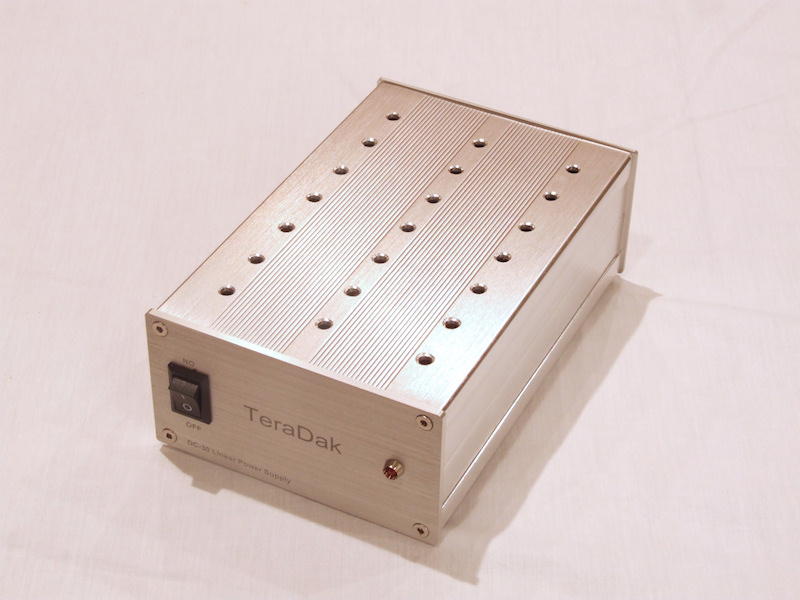 Figure 1. The DC-30 is encased in a high quality machined aluminum chassis. TeraDak recommends a break in period of one week. Clarity and detail improved after 24 hours. I did not hear further improvements due to additional playing time after that.
Figure 1. The DC-30 is encased in a high quality machined aluminum chassis. TeraDak recommends a break in period of one week. Clarity and detail improved after 24 hours. I did not hear further improvements due to additional playing time after that.All those ventilation holes are not there for show. The DC-30 gets hot. Linear power supplies have lower efficiency than switch mode power supplies, therefore more of a LPS's energy is converted to heat. The top cover was 120 degrees Fahrenheit within a few minutes of being turned on. In comparison, the heat sinks of my Pass Labs X600.5 power amplifiers are in the range of 125 to 130 degrees Fahrenheit after an hour of playing at moderate levels (~85 dB-C). Temperature was measured with a Fluke model 561 infrared thermometer.
The DC-30 measures 4.25" wide by 6.5" long by 2.375" high and weighs 2.1 pounds.
Aluminum panel thicknesses are as follows:
Front panel: 0.12"
Rear panel: 0.08"
Side panels: 0.155"
Top and bottom panels: 0.1"
Panel thicknesses were measured with Mitutoyo model CD-6 CSX digital calipers.
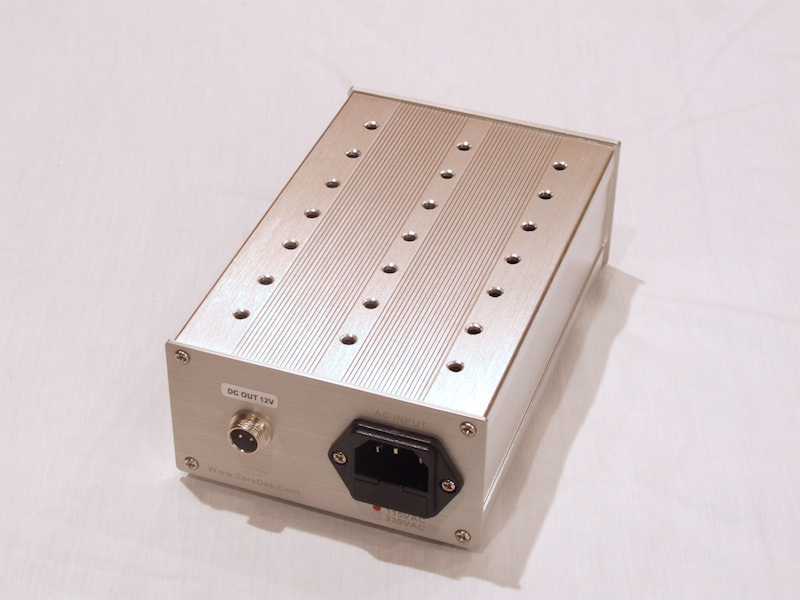 Figure 2. DC-30 rear panel. Output is 12 volts at 2 amperes, same as the Rosewill enclosure's stock power supply.
Figure 2. DC-30 rear panel. Output is 12 volts at 2 amperes, same as the Rosewill enclosure's stock power supply.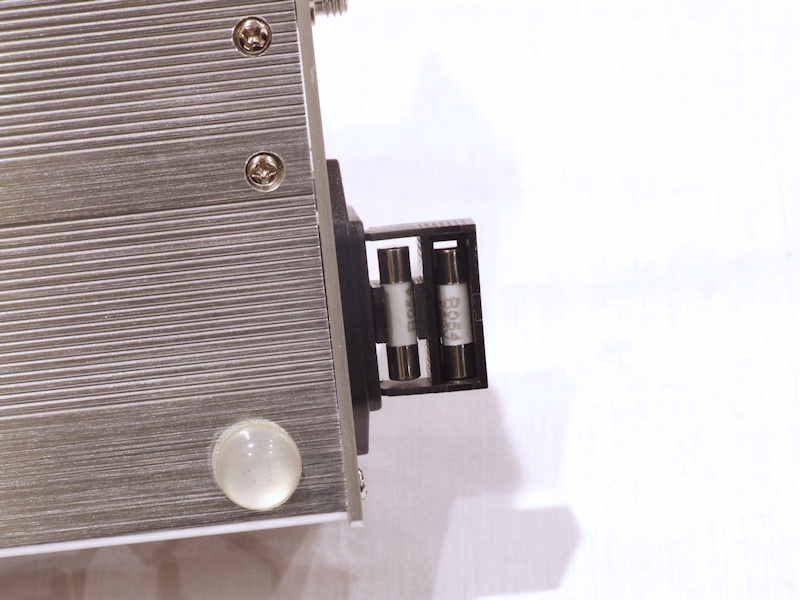 Figure 3. The fuse compartment below the IEC power cord inlet has a spare fuse (the fuse closest to the rear).
Figure 3. The fuse compartment below the IEC power cord inlet has a spare fuse (the fuse closest to the rear).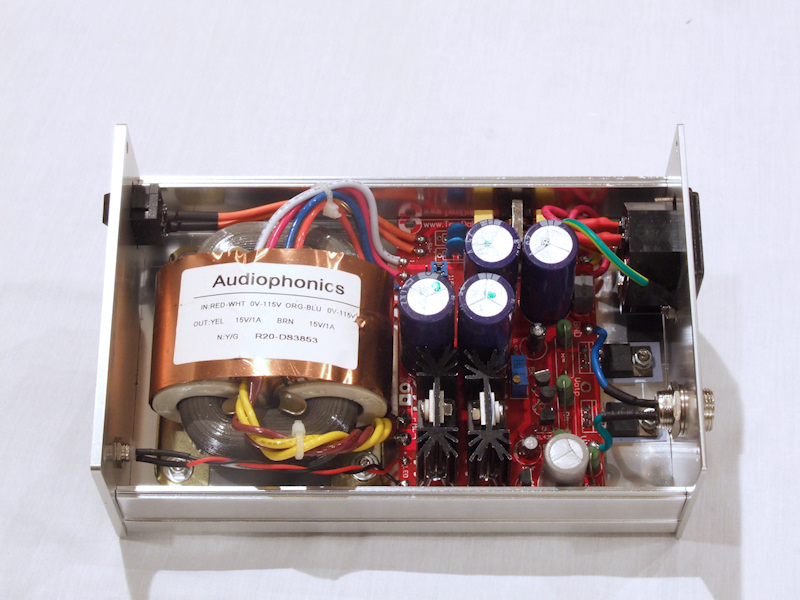 Figure 4. The interior of the DC-30 is dominated by the Audiophonics R-core transformer. The transformer might be a custom design as I did not find this model (R20-DS3853) on the Audiophonics website. The DC-30 is marketed as an upgrade power supply for the Musical Fidelity V90 DAC.
Figure 4. The interior of the DC-30 is dominated by the Audiophonics R-core transformer. The transformer might be a custom design as I did not find this model (R20-DS3853) on the Audiophonics website. The DC-30 is marketed as an upgrade power supply for the Musical Fidelity V90 DAC.R-core transformers offer some of the sonic advantages of toroidal transformers at a much lower cost.
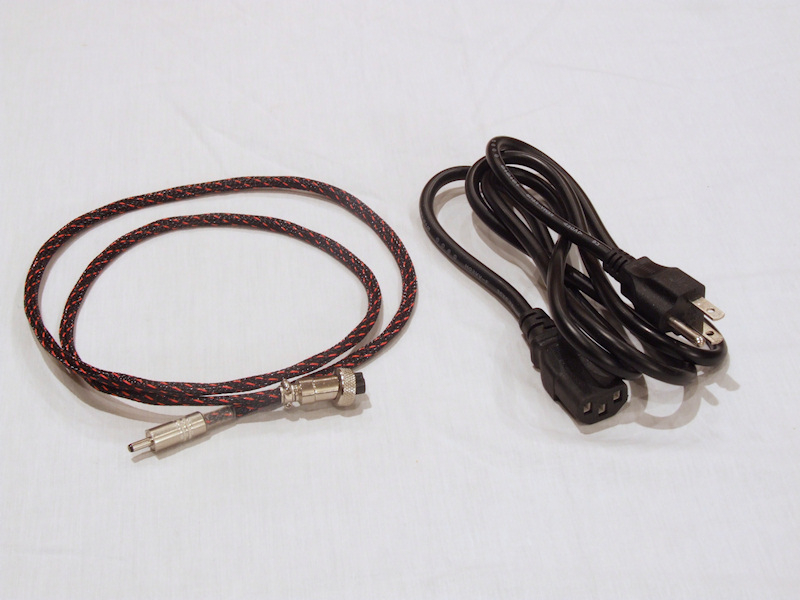 Figure 5. A 1 meter DC power cable and 1.5 meter 18 gauge IEC power cord are included.
Figure 5. A 1 meter DC power cable and 1.5 meter 18 gauge IEC power cord are included.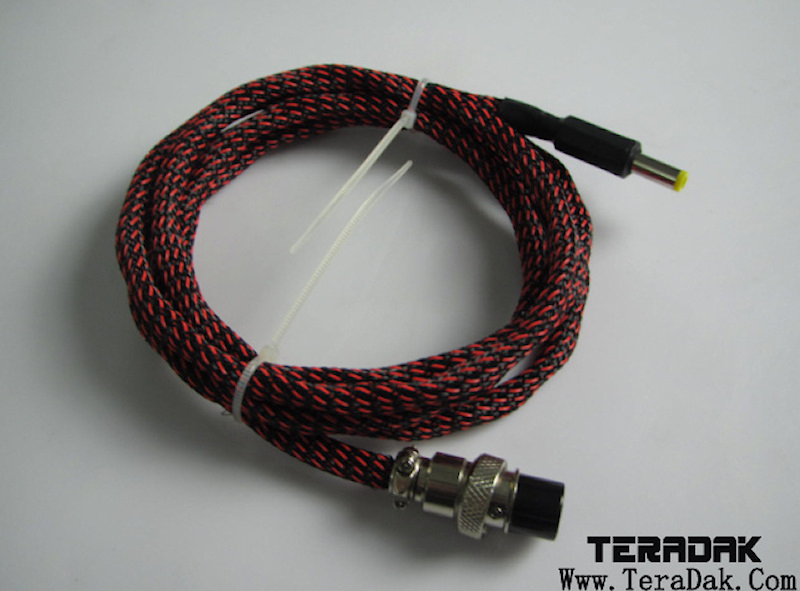 Figure 6. I didn't look closely enough at the picture of the DC-30's DC cable on the TeraDak website to notice it was a little bit too skinny. Standard size in the U.S. is an external barrel diameter of 5.5 mm and an interior diameter of 2.1 mm. The power plug of the cable I received was substantially smaller, as shown in figure 7.
Figure 6. I didn't look closely enough at the picture of the DC-30's DC cable on the TeraDak website to notice it was a little bit too skinny. Standard size in the U.S. is an external barrel diameter of 5.5 mm and an interior diameter of 2.1 mm. The power plug of the cable I received was substantially smaller, as shown in figure 7.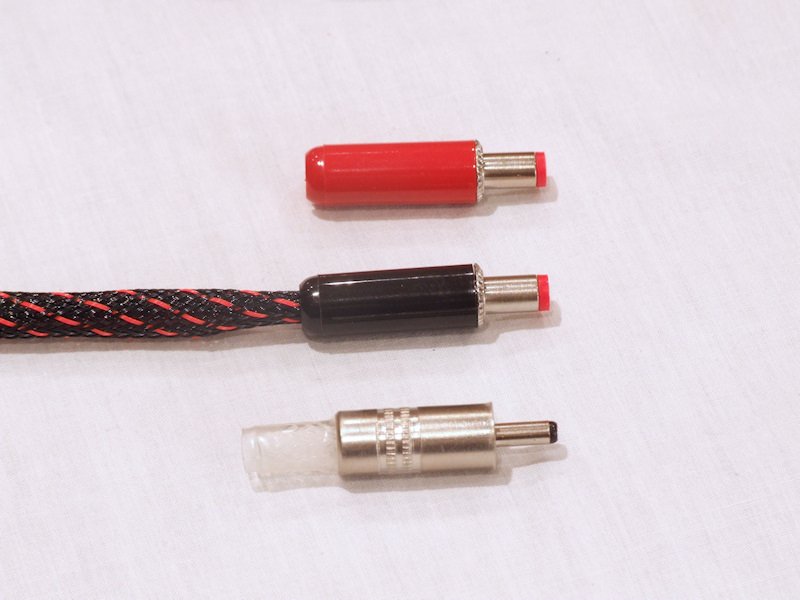 Figure 7. The DC-30's DC power plug (bottom) was too small (3.46 mm barrel diameter) for the Rosewill enclosure's DC power port. I ordered two different color Switchcraft plugs #762 (black) and #763 (red) from Mouser. I couldn't decide which color I liked best prior to ordering.
Figure 7. The DC-30's DC power plug (bottom) was too small (3.46 mm barrel diameter) for the Rosewill enclosure's DC power port. I ordered two different color Switchcraft plugs #762 (black) and #763 (red) from Mouser. I couldn't decide which color I liked best prior to ordering.TeraDak confirmed via email that a 5.5 mm x 2.1 mm plug is available, but it, like the input voltage, needs to be specified at the time of ordering.
The SoundIn summary, the spatial improvements were spectacular.
A playlist was made of twenty songs, ten pulled from the internal Seagate drive and the same ten pulled from the external Western Digital drive. Music from the external drive, with the TeraDak LPS, had the following differences:
1. More weight and more of a sense of space around sound images.
2. Increased tactile sensation: More sound pressure against my chest and upper arms corresponding to bass beats.
3. On some songs, some sound images were raised 6 inches to 1 foot higher.
4. On some songs, depth was increased by the sound stage moving forward up to1 (or more) foot in the center and up to 2 feet (or more) at the sides.
5. Piano notes had more detail, sustain, and decay, and more airiness and "sparkle" in the high notes.
6. More detail in bass micro-rumble and micro-growl.
7. Lowered noise floor as evidenced by the music sounding louder, but not actually measuring louder.
8. More dynamics.
9. Sharper transients.
MeasurementsTime domain (sine wave) and frequency domain (Fast Fourier Transform) measurements were taken with a Tektronix TDS-2012 digital oscilloscope.
The TeraDak LPS was plugged into a PS Audio PowerBase noise gate/isolation platform, which was plugged into a PS Audio P10 AC regenerator, which was plugged into a dedicated 20 amp AC circuit terminated with an in-wall PS Audio Soloist SE passive power conditioner.
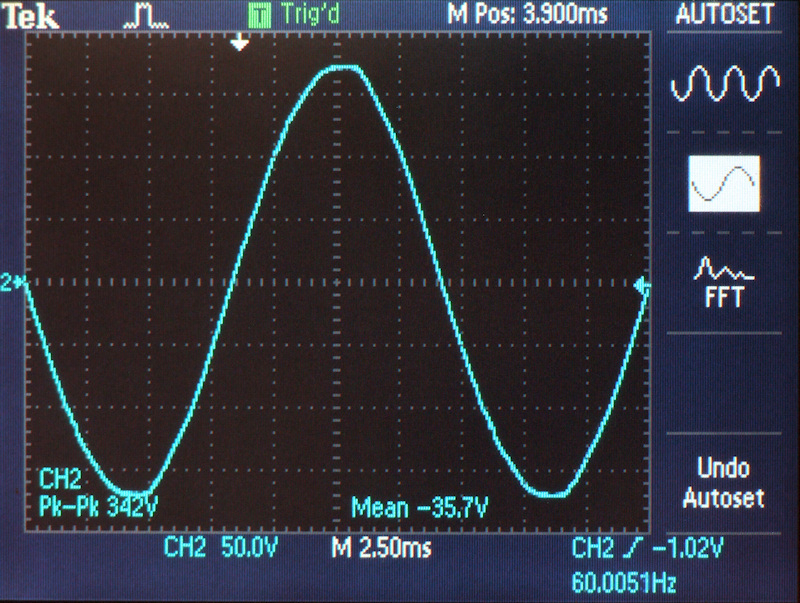 Figure 8. Sine wave plot of passively filtered open circuit AC voltage from the wall. The waveform shows flattened peaks due to harmonic distortion and other power line noise.
Figure 8. Sine wave plot of passively filtered open circuit AC voltage from the wall. The waveform shows flattened peaks due to harmonic distortion and other power line noise.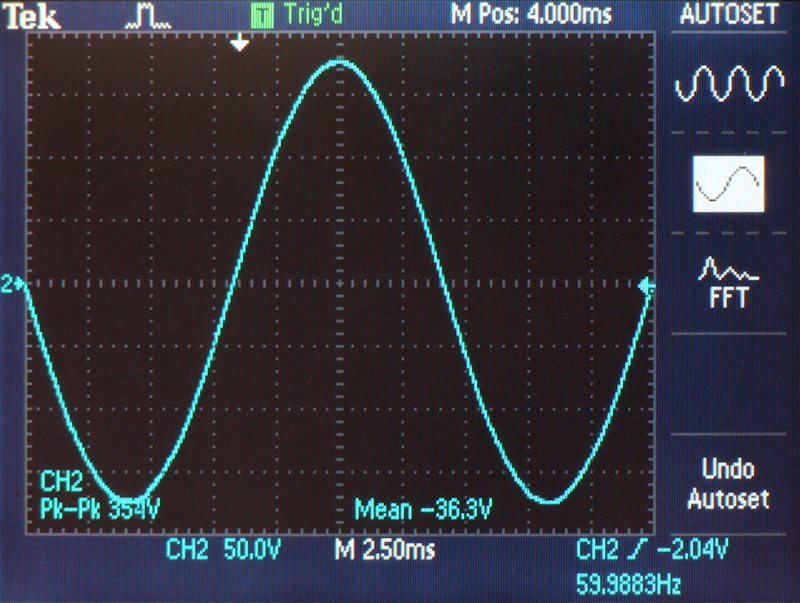 Figure 9. Sine wave plot of regenerated open circuit AC voltage measured at the output of the PS Audio PowerBase: A near perfect sine wave shape.
Figure 9. Sine wave plot of regenerated open circuit AC voltage measured at the output of the PS Audio PowerBase: A near perfect sine wave shape.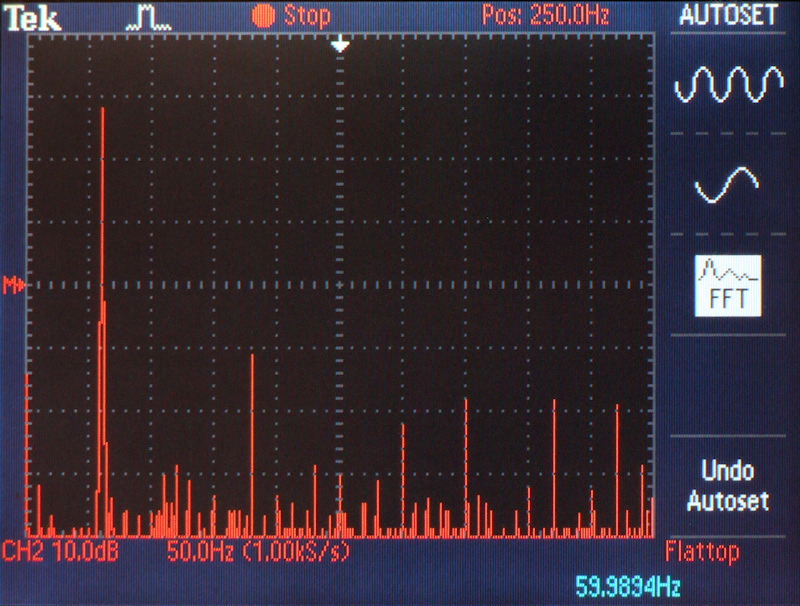 Figure 10. FFT plot of passively filtered open circuit AC voltage from the wall. The only signal of value is the large spike on the left, which represents the 60 Hz power signal. Everything else is harmonics, the power company's 470 Hz signaling tone, and noise.
Figure 10. FFT plot of passively filtered open circuit AC voltage from the wall. The only signal of value is the large spike on the left, which represents the 60 Hz power signal. Everything else is harmonics, the power company's 470 Hz signaling tone, and noise.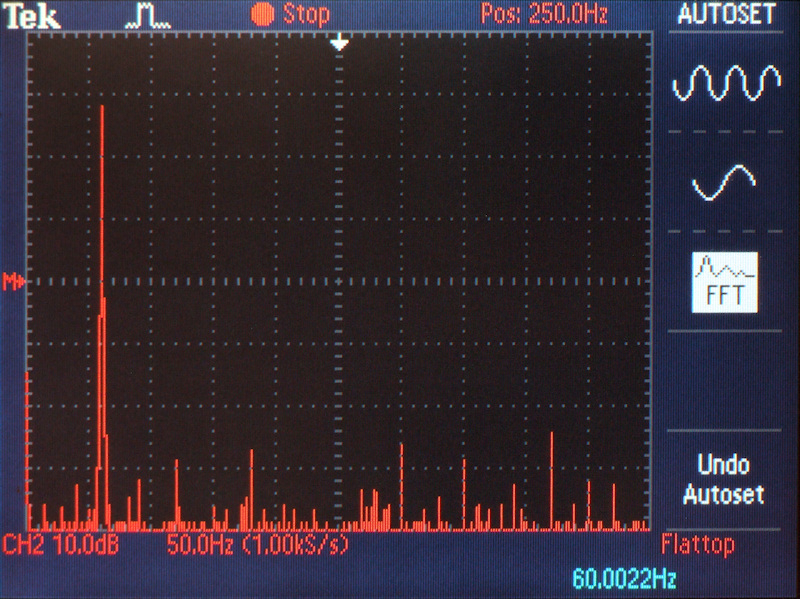 Figure 11. FFT plot of regenerated open circuit AC voltage measured at the output of the PS Audio PowerBase: Drastic reduction in harmonics and noise.
Figure 11. FFT plot of regenerated open circuit AC voltage measured at the output of the PS Audio PowerBase: Drastic reduction in harmonics and noise.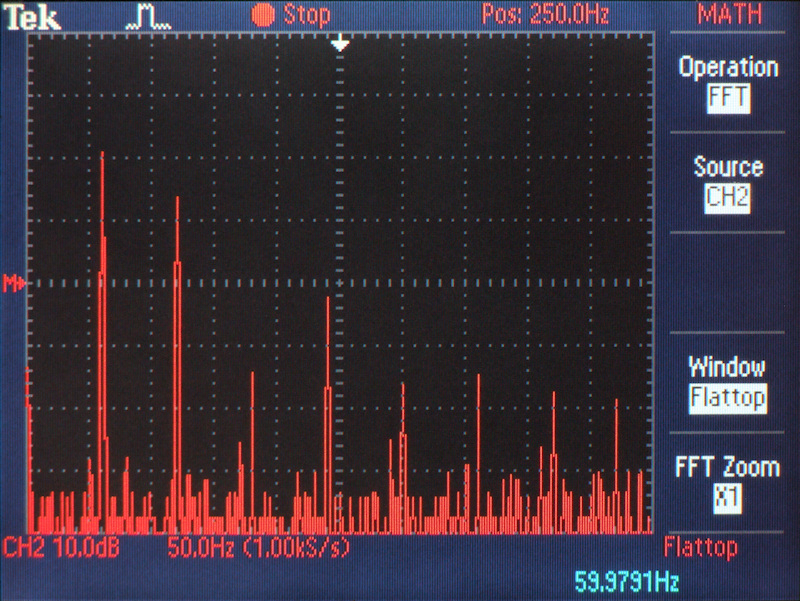 Figure 12. FFT plot of open circuit AC voltage measured at the output of the Rosewill enclosure's stock Flypower switch mode power supply. This power supply generates even order harmonics, which were not present in the original voltage signals from neither the wall nor the AC regenerator.
Figure 12. FFT plot of open circuit AC voltage measured at the output of the Rosewill enclosure's stock Flypower switch mode power supply. This power supply generates even order harmonics, which were not present in the original voltage signals from neither the wall nor the AC regenerator.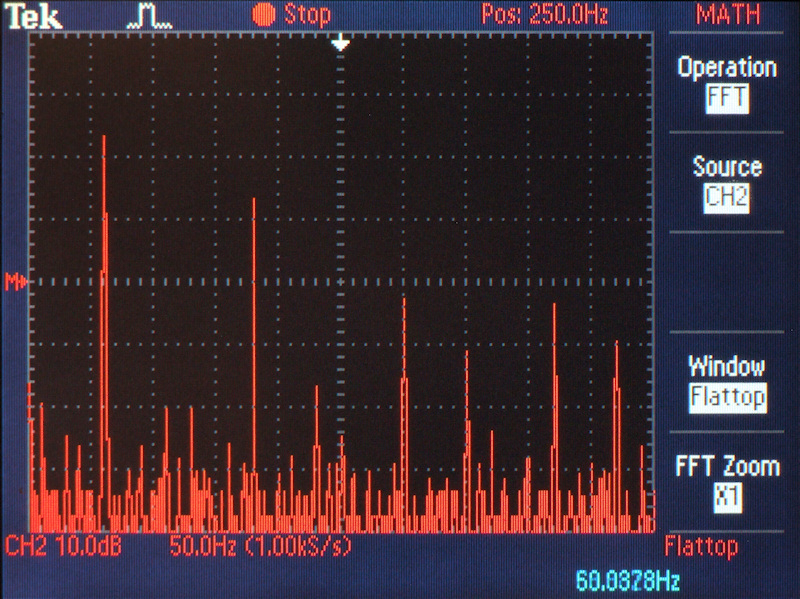 Figure 13. FFT plot of open circuit AC voltage measured at the output of the iFi Audio iPower switch mode power supply. No even order harmonics were generated, but the odd order harmonics are significantly greater in amplitude in the voltage from both the wall and the AC regenerator.
Figure 13. FFT plot of open circuit AC voltage measured at the output of the iFi Audio iPower switch mode power supply. No even order harmonics were generated, but the odd order harmonics are significantly greater in amplitude in the voltage from both the wall and the AC regenerator.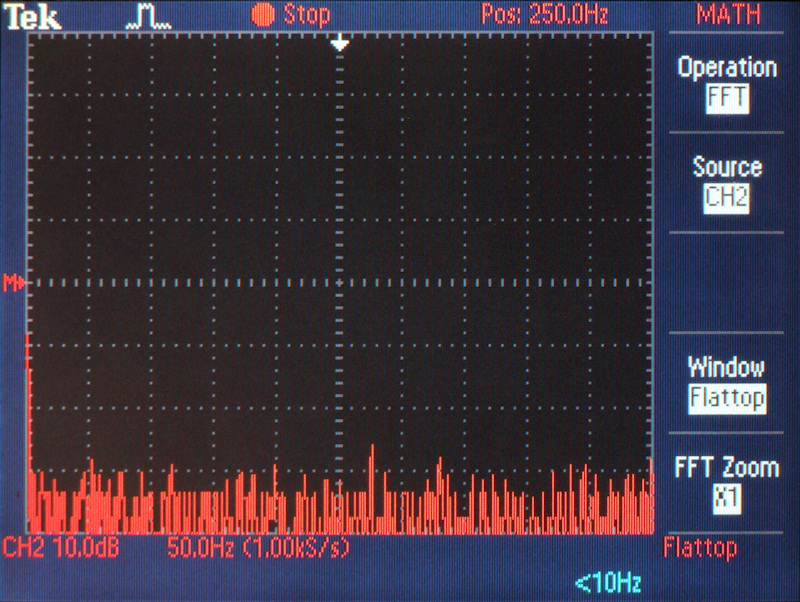 Figure 14. FFT plot of open circuit AC voltage measured at the output of the TeraDak LPS. In stark contrast to the switch mode power supplies, no AC artifacts at all.Tweaks
Figure 14. FFT plot of open circuit AC voltage measured at the output of the TeraDak LPS. In stark contrast to the switch mode power supplies, no AC artifacts at all.TweaksAfter preliminary listening evaluations were completed, attention was turned toward tweaking. The first thing to address was the DC-30's very bright LED.
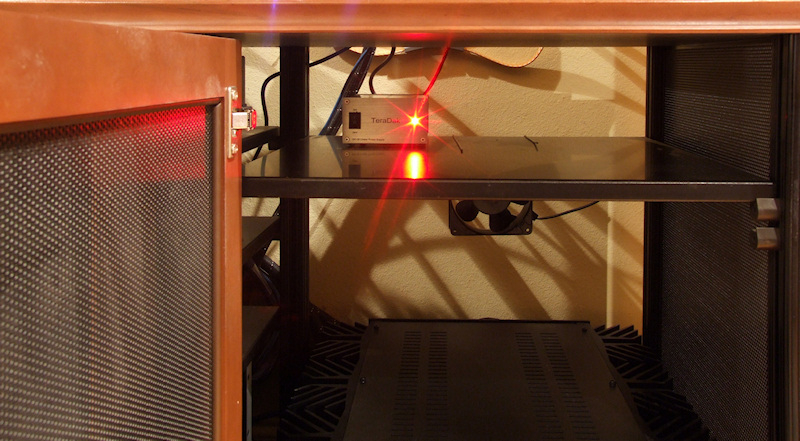 Figure 15. Something needed to be done about that "red sun" LED.
Figure 15. Something needed to be done about that "red sun" LED.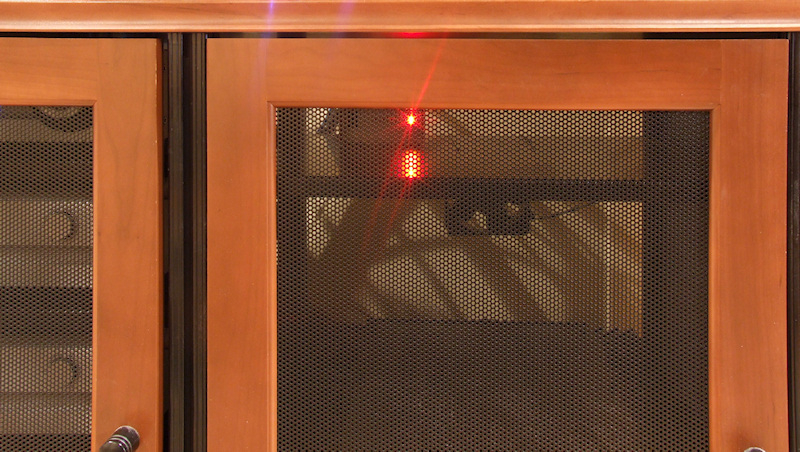 Figure 16. Even with the audio equipment cabinet door closed, the red sun still shined brightly.
Figure 16. Even with the audio equipment cabinet door closed, the red sun still shined brightly.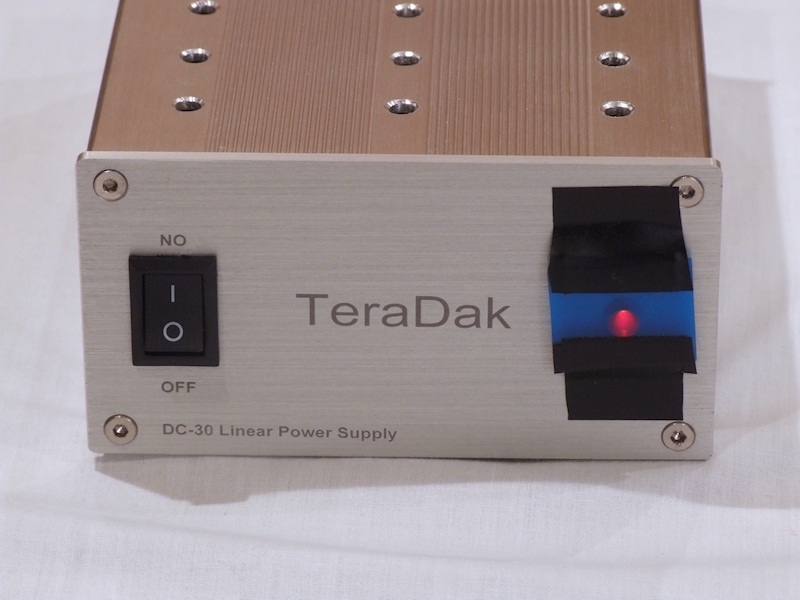 Figure 17. A double layer of blue film reduced the red sun to a warm, mellow red glow.
Figure 17. A double layer of blue film reduced the red sun to a warm, mellow red glow.If you have had good results with audio grade fuses and audio grade power cords, and if you are interested in this, or another, linear power supply, an upgrade power cord and audio grade fuse is worth auditioning.
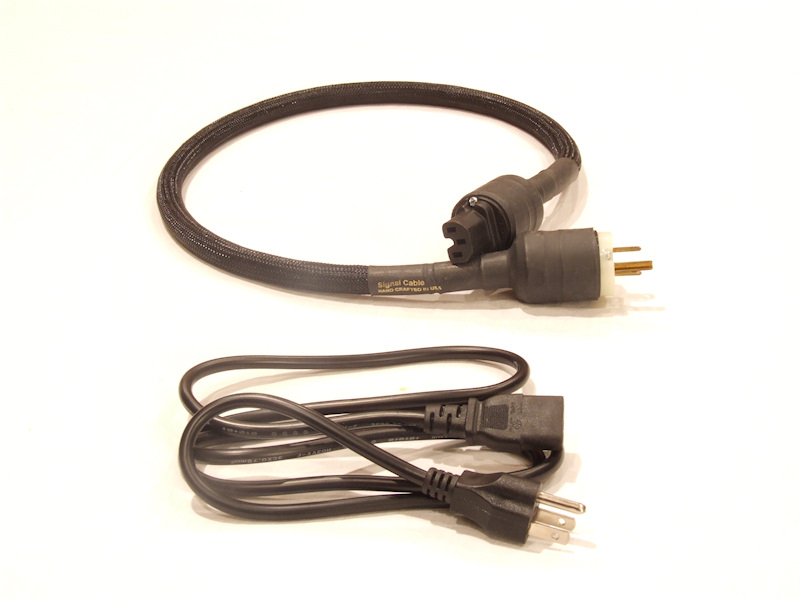 Figure 18. The stock 18 gauge power cord was replaced with a Signal Cable MagicPower 10 gauge power cord ($79) that was in my box of spare power cords.
Figure 18. The stock 18 gauge power cord was replaced with a Signal Cable MagicPower 10 gauge power cord ($79) that was in my box of spare power cords.  Figure 19. After some audio grade fuse trials, the stock 5 mm x 20 mm Miro R054 1A, 250V slow blow fuse ($0.25), was replaced with one of the HiFi Tuning SilverStar 1A fuses ($40) I had on hand.Off To Work
Figure 19. After some audio grade fuse trials, the stock 5 mm x 20 mm Miro R054 1A, 250V slow blow fuse ($0.25), was replaced with one of the HiFi Tuning SilverStar 1A fuses ($40) I had on hand.Off To WorkI took the Teradak LPS to audition in my system at work. The internal Seagate 5 TB hard disk drive had already been placed in a Rosewill Armer RX304-APU3-35B external enclosure in order to take advantage of the Rosewill's drive spin down feature. The iPower power supply formerly used in my two channel system had been transferred to the work system. The improvements were immediately obvious and similar to what I heard at home. A second TeraDak LPS was ordered for the work system.
https://www.audiocircle.com/index.php?topic=144829.0Comparison To Network Attached Storage (NAS)A NAS is used by some audio enthusiasts to host their music libraries. Ethernet is a low noise transmission protocol due to the fact that Ethernet ports are galvanically isolated (transformer coupled). Therefore, there is no direct electrical connection between devices on an Ethernet network. Accordingly, most of the electrical noise in a device does not get transmitted to other devices over an Ethernet cable. A small amount of noise does get transferred over, but it is usually negligible in amplitude and usually inaudible.
I transferred 7 DSD64 songs to the Synology DS918+ NAS in my home theater system. The seven songs' titles were edited to include the acronym "NAS" at the end. A share was set up on the BDP-3 digital player's NAS interface. A playlist was made of the NAS songs and their counterparts on the external drive attached to the BDP-3. Songs from the NAS sounded identical in every way to songs from the external drive with its enclosure's upgraded power supply and upgraded USB 3 cable.
The first trials were done with songs streamed wirelessly via the following transmission chain:
Synology NAS ==>Ethernet Cable==>Wireless AC Range Extender #2 ==>Wireless Air Interface==>Wireless AC Range Extender #1==>Ethernet Cable==>BDP-3
With wireless streaming from the home theater NAS, I experienced occasional 1-2 second dropouts and stuttering. This was surprising, since wirelessly streaming 2K and 4K Blu-rays to any of my home's other televisions never experience any dropouts or stuttering. The home theater television has a wired connection to the NAS.
I ran a 50 foot Cat5e cable from the home theater's NAS to the two channel system's wireless AC range extender. Streaming of music from the NAS over the wired connection was flawless.
Wired transmission chain:
Synology NAS ==>50' Ethernet Cable==>Wireless AC Range Extender #1==>Ethernet Cable==>BDP-3.
Summary Of ResultsThe summary of results is as follows:
1. The internal 5 TB Seagate HDD sounded better than the 6 TB WD Black HDD in the stock Rosewill enclosure.
2. The 6 TB WD Black HDD with the Rosewill enclosure's iFi Audio iPower switch mode power supply and iFi Audio Mercury3.0 USB 3 cable sounded the same as the internal 5 TB Seagate HDD.
3. The 6 TB WD Black HDD with the Rosewill enclosure's TeraDak linear power supply and Mercury3.0 USB 3 cable sounded better than the internal 5 TB Seagate HDD.
4.
The Synology NAS sounded the same as the 6 TB WD Black HDD with the Rosewill enclosure's TeraDak linear power supply and Mercury3.0 USB 3 cable. 5. The internal 5 TB Seagate HDD sounded better than the 5 TB Seagate HDD in the stock Rosewill enclosure.
6. The external 5 TB Seagate HDD in the Rosewill enclosure with upgraded USB 3 cable and upgraded power supply sounded better than the internal 5 TB Seagate HDD.
Further StudyThe sound quality result with the Synology DS918+ NAS was intriguing. I am considering moving my music library to a Synology DS718+ NAS with two WD Red Pro 6 TB drives in RAID1 configuration. This option would cost $200 more than the current external hard drive connected to the BDP-3. However, the BDP-3 and its external hard drive are currently used as a quasi-NAS for the various computers and music players in my home. A real NAS would be a more efficient solution.
Associated Equipment - Home Two Channel Stereo SystemBryston BDP-3 digital player
PS Audio PowerBase isolation platforms for DAC, BDP-3, and U-Clock
22 pound granite slabs to couple source components to isolation platforms
Black Diamond Racing Isolation Mini Pits and Mk IV Cones
dCS Puccini U-Clock word clock
dCS Debussy DAC
Rosewill Armer RX304-APU3-35B hard drive enclosure with 6 TB WD Black hard drive
iFi Audio Mercury3.0 USB 3 cable
Pass Labs XP-30 line level preamplifier
Pass Labs X600.5 monoblock power amplifiers
AudioQuest Sky XLR interconnects
AudioQuest Everest speaker cables
Revelation Audio Labs Prophecy CryoSilver digital coaxial cable - RCA connectors
Revelation Audio Labs Prophecy CryoSilver digital coaxial cable - BNC connectors
Revelation Audio Labs Prophecy CryoSilver USB 2.0 dual leg cable
PS Audio PerfectWave AC-12 power cords
PS Audio PerfectWave P-10 AC regenerator
Polk Audio SDA SRS 1.2TL loudspeakers (heavily modified)
Salamander Synergy Triple 30 audio credenza
Logitech Harmony One remote
Dell 7140 tablet computer for system control
Associated Equipment - Work Two Channel Stereo SystemBryston BDP-2 digital player
Bryston BDA-3 digital to analog converter
Bryston BP-26/MPS-2 preamplifier/power supply
Bryston 4B3 power amplifier
Rosewill Armer RX304-APU3-35B hard drive enclosure with 5 TB Seagate hard drive
Polk Audio SDA CRS+ loudspeakers (heavily modified)
Douglass Connection DCF92 speaker cable
Revelation Audio Labs 1.25m USB 2.0 split configuration USB 2.0 cable
PS Audio Premier SC 1.5m Power Cords for amplifiers and source components
PS Audio PerfectWave AC-12 power cord 2m For P10
PS Audio xStream Transcendent XLR interconnects 1m
PS Audio xStream Transcendent XLR interconnect 1.5m
PS Audio P10 AC Regenerator
Revelation Audio Labs power umbilical for MPS-2/BP-26
Logitech Harmony One remote
Dell 7140 tablet computer for system control